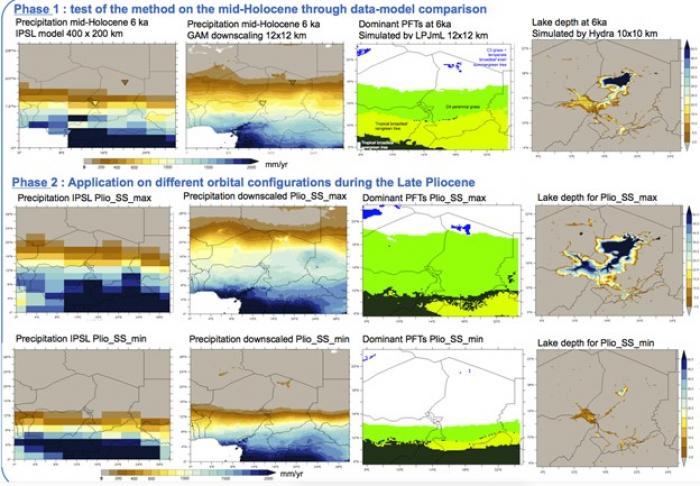Camille Contoux (OT-Med post-doc)
Nicolas Barrier (OTMed enginees)
Florence Sylvestre (CEREGE)
Alberte Bondeau (IMBE)
The anthropogenic global warming affects not only surface air temperatures, but also the hydrological cycle. While high latitudes are more vulnerable to temperature increases, low latitudes are the most sensitive to changes of the hydrological cycle. One notorious weakness of climate models involved in the IPCC climate projections is embedded in the future evolution of the low-latitudes precipitation patterns. These uncertainties challenge climate models ability to reliably assess vulnerability and adaptation of populations.
Lake Chad located is one extremely variable and vulnerable resource located in the core of the Sahelian area, onto which resources 13 million people directly depend (crop culture, farming and fishing activities). This project aims at investigating the vulnerability of Lake Chad region with respect to the changes in the regional hydrological cycle as anticipated by climate models. A suite of models and downscaling techniques is used, designed to document the connections between global and regional climate changes, including vegetation and hydrological models, to diagnose how regional precipitation changes affect water resources in this region. Considering the uncertainty of precipitation predictions for the future in this region, Lake Chad variability is studied during past warm periods, considered as comparable to future global warming conditions in this region.
The statistical downscaling procedure produces a precipitation map that fits perfectly well with paleo-precipitation estimates for the mid-Holocene. This then feeds an ecosystem model and a hydrological model for which the results are comparable to mid-Holocene data. This validates the methodology for studying other warm periods and reproducing Pliocene conditions. These appear to be:
- alternating green/brown Sahara similar to the Quaternary period but with overall more humid conditions.
- there is enough water to outflow in the Bodélé depression during Pliocene dry periods, such as during historical wet episodes of the early 20th century.
- during Pliocene wet periods, streams from the Tibesti and Ennedi appear in the model but with negligible contribution compared to the Chari-Logone.
- the Megalake outflows in the Benue river at times of insolation maxima, connecting the Chad basin to the Atlantic Ocean. Filling time for the Megalake is instantaneous at the geological scale (50-80 years).
These results suggest that australopithecines in the Lake Chad basin had available food and water regardless of Pliocene climate variability. For the future, Lake Chad level is expected to follow the increasing trend of the last decade, but could undergo a drastic decrease in response to important Greenland ice melt, which is not taken into account in this study.



